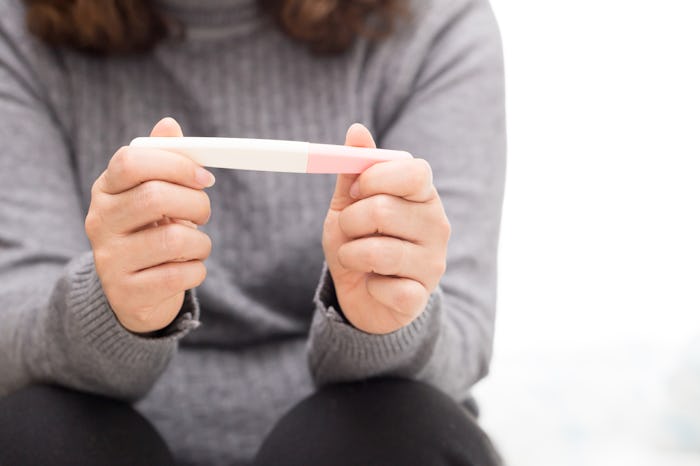Life

The Checklist You Need To Actually Get Pregnant
For those who have already had the birds and the bees discussion, the "how" behind getting pregnant isn’t exactly a mystery. But even though you know it’s all about "when two people love each other very much," it doesn’t keep you from Googling tips for how to conceive when you are in fact ready to have your own bundle of joy — or, depending on the moment, pooping machine. But how do you actually get pregnant? Experts say there are a few things to keep in mind and, if you are the planning type like me, then get excited because there are lists involved.
"Ideally, you and your partner want to allow yourself six months to go through a checklist of pre-planning before actually becoming pregnant," says Dr. Sherry Ross, an OB-GYN and Women's Health Expert at Providence Saint John's Health Center in Santa Monica, California, in an email interview with Romper. "Being prepared creates the foundation for a healthy pregnancy and healthy baby."
Initial steps include meeting with a gynecologist and/or healthcare provider six months prior to see if you and your partner are physically and mentally ready to have a healthy pregnancy, Ross recommends. Once you are cleared, then you should start taking folic acid three months prior to conception. This can be in the form of a prenatal vitamin, just make sure it has 400 micrograms to 1 milligram of folic acid per dose. Omega-3 fatty acids and vitamin D are also recommended supplement additions.
After that, Ross says, it’s all about timing.
"I spend a great deal of time giving a brief biology lesson on knowing when during the menstrual cycle pregnancy can occur," she says. "Understanding when is the right time during your menstrual cycle to conceive is essential."
Ross explains that, on average, women have a period every 28 days. "But many women don’t have a perfect 28 day cycle, and this can make it challenging to know when the egg is available for conception," she says. Ovulation happens about 14 days prior to getting your period, and this is the time when eggs are ready to be fertilized. Signs of ovulation, Ross says, include slight pelvic discomfort and "an egg white and slimy" discharge. (No one said this was a pleasant biology lesson.)
"Since sperm lives for 72 hours, knowing when ovulation occurs makes timed intercourse a straightforward process," Ross says. "The idea is to have the sperm waiting for the egg." That means, for example, that if you have determined that you ovulate on Day 15, then you can time intercourse for days 14, 15, and 16. Having intercourse on these days ensures that the sperm and egg will have a chance at forming an embryo.
Other items on the checklist include eating a balanced diet, regulating sleep habits, exercising three to five times a week, and drinking at least eight glasses of water per week. Ross says you’ll also want to do your homework on obstetricians and hospitals, as well as look into what your health insurance policy covers during pregnancy.
Most of all, Ross says, be realistic about how long it can sometimes take to get pregnant because the trying to conceive period averages six to nine months.
The good news is that when you do become pregnant, you get to start a new, count-down-to-baby checklist. The bad news is that when your tiny miracle does make it into the world, all lists go right out the window. But take it from one organization nerd to another: the prize is worth the chaos.